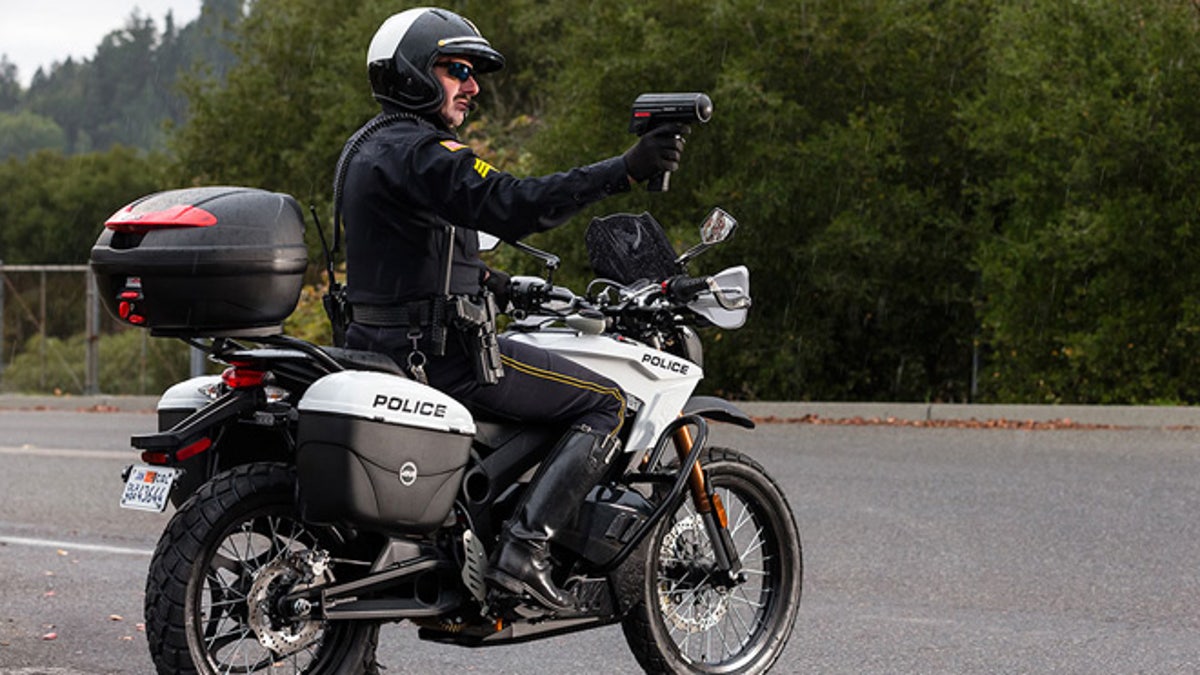
(Zero Motorcycles)
Experienced motorcyclists understand that defensive riding is a must. But riding in the "cookie zone" is one mistake that Trooper First Class Jeff Jalbert of the Connecticut State Police Motor Patrol says he sees even long-time riders make far too often. And it is a dangerous habit that as a master instructor, he trains officers not to do.
"We ride in either the right or left wheel track because of all the debris left in the center of the roadway, also known as the cookie zone," Jalbert said.
Typically stained dark with motor oil and covered in bits of tire dust and other hazards, the cookie zone gets slippery, especially when it’s wet. Not only is traction better and tire damage less likely outside "the zone," but by avoiding this center strip, a rider is more likely to be visible in the side mirrors of other vehicles. (See our safety tips for new and returning riders.)
While training recently at the Consumer Reports auto test track, Jalbert shared other experience-based safety tips:
• Be extra vigilant of texting drivers, or those occupied with other distractions. "I don’t even pass a car if they’re on the phone," Jalbert said. "You have to be aware of what they’re doing."
• Constantly keep your eyes moving, scanning for danger all around you. Don’t just focus on the car ahead. Instead, use your higher seating position to watch for danger two or three cars ahead to give you maximum time to react.
• Don’t take chances or try to jockey for position with other vehicles. You’re more vulnerable on a motorcycle, and it’s always safer to yield to other traffic. Don’t rush to get through a yellow light.
• Slow down for curves ahead of time, rather than braking in a turn. It’s much safer, and it helps a rider to maintain balance and avoid a skid. Roll the throttle back on as you exit the turn.
• When leaning into turns, keep your head upright. That makes it easier to maintain balance. Leaning your head with the bike can increase the likelihood of falling over in a turn.
Learn more in our motorcycle hub, buying guide, and in our reliability and owner satisfaction report.
Jalbert should know. He has been a motor officer since 1995, and since becoming an instructor in 1999, he’s helped put more than 250 officers through the training program. Beyond core state trooper training, motor officers have to learn how to ride safe in all types of weather, along with being trained in pursuit techniques, crowd control, how to safely lay a motorcycle down at 45 mph in an emergency, and how to fire a weapon from a moving motorcycle. Training is exhaustive and tough. Of 30 applicants for a recent round of training, only 16 made the initial cut. Just 11 of those completed the program.
Of course, Jalbert is a big believer in safety basics. Proper clothing and gear is a must, including a DOT-approved helmet, along with protective gloves, boots, pants, and jacket. He believes proper training through a Motorcycle Safety Federation (MSF) course is essential, for new and returning riders, and even for longtime motorcyclists. "People need to know that just because you’ve been riding for 40 years, doesn’t mean you’re all set," Jalbert said. "You’ve got to keep training and continue your education."
That applies to Motor Officers, as well. "We try to instill that every day is a training day and practicing what they have learned is the key to maintaining that level of safety," he said. "What they have taken away from our school becomes perishable. If they don't use it, they lose it."
See our tips to make the roads safer for cars and motorcycles.
—Jim Travers
More From Consumer Reports
Copyright © 2005-2013 Consumers Union of U.S., Inc. No reproduction, in whole or in part, without written permission. Consumer Reports has no relationship with any advertisers on this site.